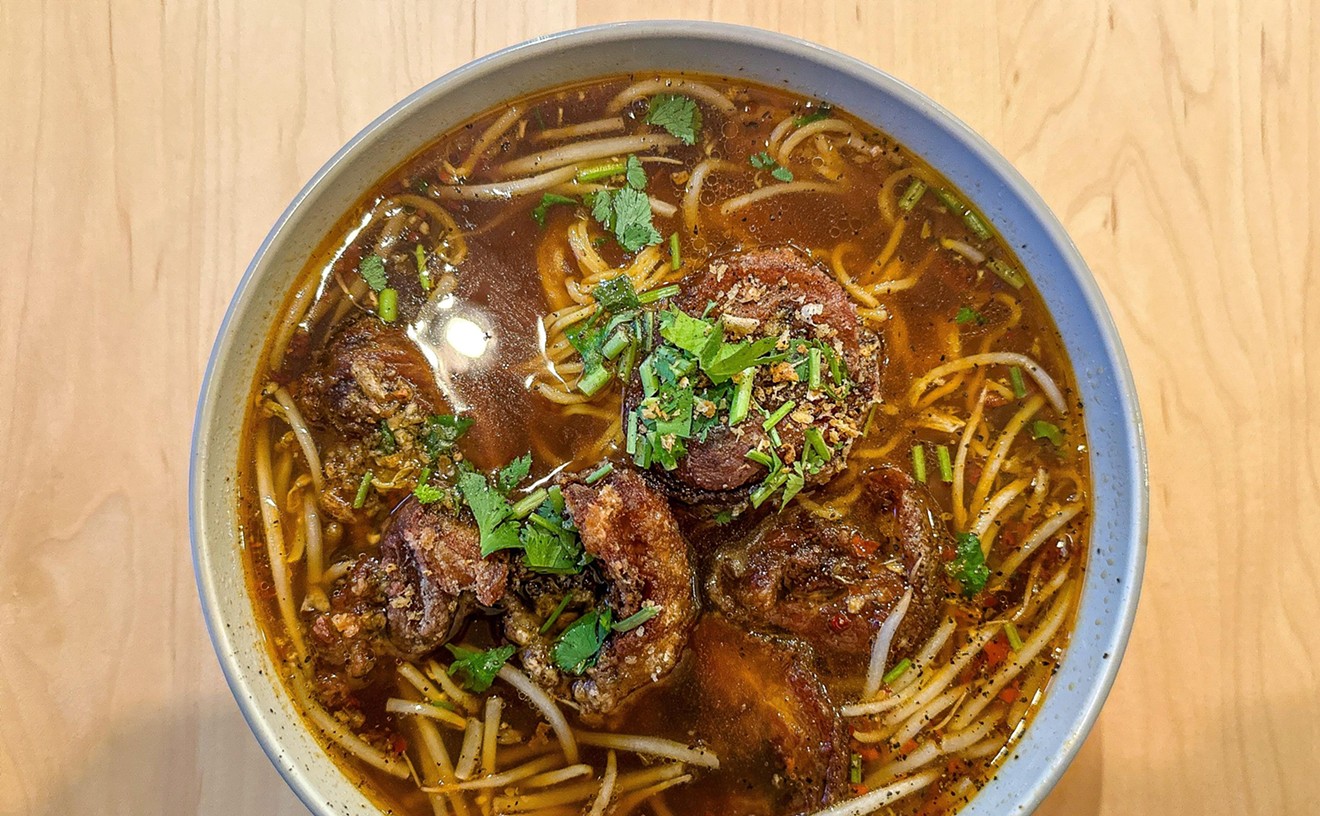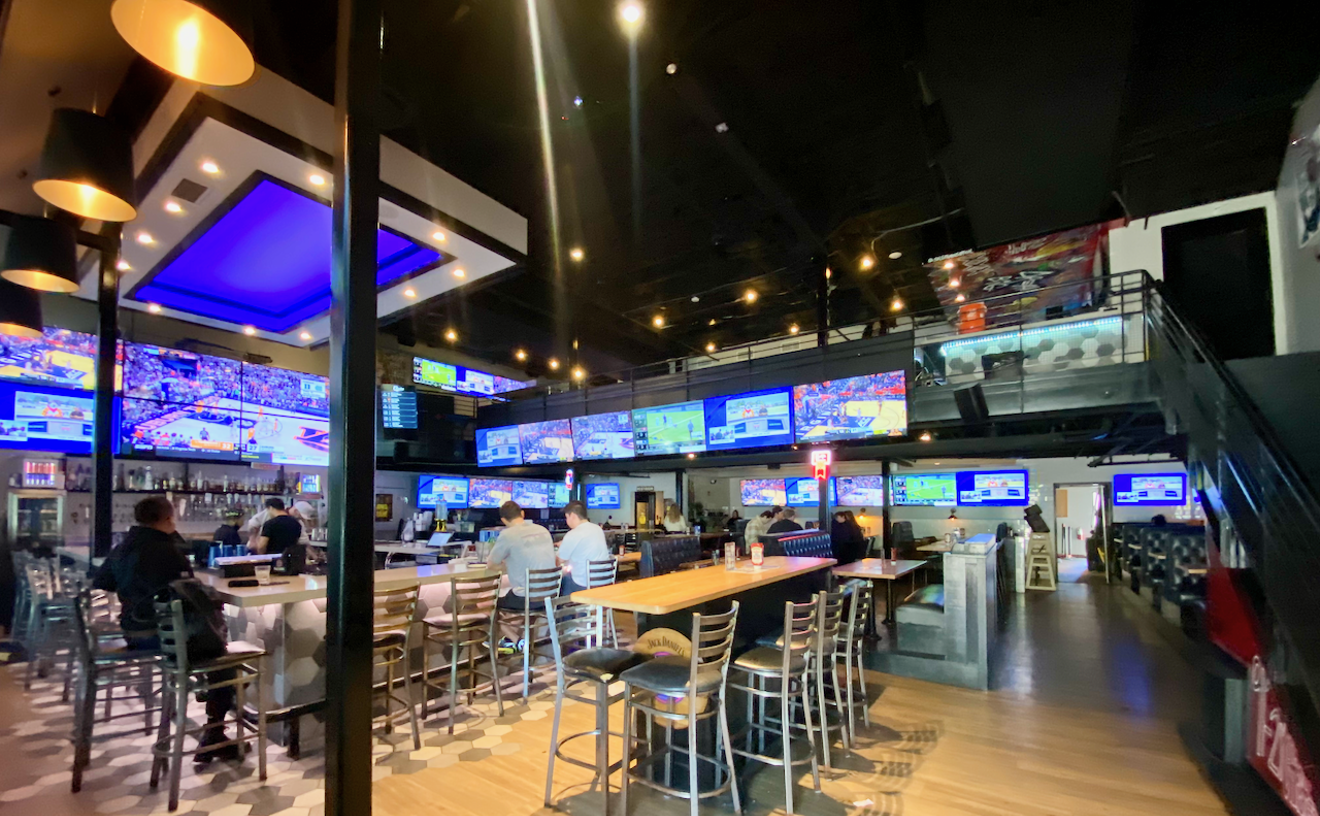Sea cucumbers are not necessarily appealing sea beasts. But then neither were sea sponges until some shrewd licensed cartoon character marketer dressed one in Fruit of the Loom briefs and paired it with a Texas squirrel in a deep-diving suit. A relative of the starfish and the sea urchin, the sea cucumber has a long cylindrical inchworm-like body that can range from a few millimeters to more than 6 feet in length. The mouth--often surrounded by tentacles to facilitate dining--and anus are at opposite ends of the body tube, an example of sound anatomical design.
Colors are almost universally drab. But so are the mild tawny sauces Chef Hsu spoons over them. Braised sea cucumbers and asparagus are gently spread over a large platter in a smooth, slightly gelatinous dark gold sauce toned with restrained soy splashes. Sea cucumber sections are interspersed with thin, bright green asparagus tips angle-cut at the base. Cucumber pieces are actually severed sections of halved body wall that curls in on itself, forming a kind of cucumber cup. It has a consistency of dried silicone sealer: pliable and elastic like rubber, yet tender--octopus on emollients. The inside of the body cavity is smooth and polished, while the outside is mottled with clusters of blemishes and bumps in shades of gunmetal and drab russet. Tawny nipples, almost like tiny fingers, erupt at seemingly random points from the gnarled surface. But the sea cucumber segments are easy to cut, separating with just the slightest fork pressure.
From a culinary standpoint, the cucumber has a mild, almost nonexistent flavor. The sauce supplies the bulk of the palate tingle. Sea cucumber is predominantly a textural experience, though the odd visual flourishes over the outer body surface more than compensate for any flavor sterility (am I actually eating this?).
But this is a good part of Chef Hsu's demeanor. Its entrées, its pieces of exotica, are mostly gentle, which takes the edge off the unexpectedness (sea cucumber or even shark's fin with pork belly seems more approachable than other strains of Chinese exotica such as sliced snake with bamboo shoots). And there is an extraordinarily conventional introduction to the place. Chef Hsu is an aircraft hangar of a feedery in a strip mall next to a shop selling sports ephemera and across from a superstore installation called Latin Bazaar. The inside is restrained kitsch, but kitsch all the same. To the left of the entrance is an enormous partitioned tank congested with lobsters and crabs. Lili Hsu, co-owner with chef/husband Hsin Hsu, usually patrols the front door and, if you're interested, will show you which of the crabs pressed up against the glass tank walls is snoozing (she points to retracted eye stalks in the crab's head as the telltale sign).
To the right of the entrance is a bar, dotted with fat Buddhas and bamboo plants, that serves plum wine and Asian liquors and beers. The dining room is centerpieced with four large buffet tables clad in brass and a reddish wood grain Formica. This is where Chef Hsu's all-you-can-eat "super buffet" ritual is held. These tables are laden with typical "Americanized" Chinese grub--egg foo yong, chop suey, egg rolls, Kung Pao chicken, sweet and sour pork, Hunan beef--the ilk found in most Dallas Chinese restaurants.
Here it seems better. The vegetables are bright and crisp. Fruits--cantaloupe, honeydew, watermelon, pineapple, bananas, etc.--are lush. Though the fried foods were a little dry--a buffet table malady that's almost impossible to remedy--they were virtually devoid of grease.
Yet, good or not, these tables are still mind-numbing altars of the timid. The à la carte menu is where the real action is; it is where Chef Hsu's soul resides. Hsin Hsu is an ethnic Chinese born in Korea who spent a good portion of his culinary career working the kitchen in a five-star hotel in Seoul. His specialty is cuisine from Shandong province, a coastal enclave in east central China astride the lower reaches of the Yellow River in the North China Plain. Major crops emanating from this Sino scape are wheat and soybeans, and steamed breads, dumplings and noodles are Shandong staples rather than rice (although Chef Hsu has the usual roster of rice dishes). The province is also known for its apples, pears, small dates and watermelon. This is no doubt why watermelon has such a heavy presence on the buffet table and slices of it in both red and yellow are served at the conclusion of the meal.
In addition to the sea cucumbers, the à la carte menu includes stewed, braised and souped shark's fin, jellyfish and abalone as well as crab and lobster dishes. Perhaps indicative of Hsu's stint in Korea, à la carte meals begin with a pair of small dishes of pickled vegetables: a layering of pitilessly blazing kimchi (pickled cabbage); and a dish of lemony yellow radish slices. The radish was the mellower of the two--a feat not too hard to accomplish--gently surging with a snapping crunch and an alluring sweet-sour tug.
Though it can be spicy, Shandong cuisine often comes off as unnervingly mild. You have to wait for it to settle in the mouth before the complexity peeks through. Seafood noodle soup seemed flat at first plunge, though introductory rituals add interest. The soup arrives in a large bowl with house-made wheat noodles that are so long our server hovered over the bowls with a spoon and a pair of scissors, lifting them out of the broth and snipping bunches of long strands into manageable tresses. The rich chicken broth was a rat's nest of Napa cabbage, egg, shrimp, mussels, calamari and tiny towelettes of beef cragged with wide crevices separating the grain. The pieces of seafood skirted soup mushiness with firm, moist textures and clean flavors. But it was curious how the bits of egg seemed to cling to the tubes of calamari, covering the cylinders like a layer of barnacles.
Sautéed chicken with asparagus, a preparation that wouldn't look out of place in a cardboard carton (you wonder if peanuts or cashews might churn up), was a remarkably balanced and savory ensemble with bok choy, whole mushroom tops (with a racy muskiness) and bamboo shoots. The juicy chicken strips absorbed the smooth amber sauce blended from soy and oyster sauces (most of the sauces seem girded in various proportionate blends of these two staples). The vegetables are crisp, tender and bright.
Lots of restaurants serve whole fried fish, including Chinese, Latin and shacks specializing in farm-raised catfish. But Chef Hsu's whole fried snapper is laced with subtle departures. It is served with a body that has largely been eviscerated, leaving just the head, tail, fins and skeletal structure remnants. Nuggets of coated and fried creamy white fish meat are scattered over the top and tangled with strands of thinly sliced carrot and mushroom. These golden fish pieces aren't crunchy in the least. Instead, through a slathering of a mildly sweet and thick sauce, the deep-fry treatment has been softened, making the fish nuggets more like dumplings than the popcorn shrimp curls they resembled. Although the fish carcass was largely plucked clean to make these morsels, there was still plenty of meat left, mostly behind the head, for gobs of indulgent gouging. Chef Hsu's whole fish is delicious.
Though there is little in this restaurant visually to suggest adventure (the décor and the "Super Buffet" sign outside suggest culinary vandalism), the imposing à la carte menu riddled with sea cucumbers and scant, cryptic English menu headings, suggests otherwise. There's adventure here. So get over there and get on with it. This could very well represent a China Town seeding on Harry Hines.










